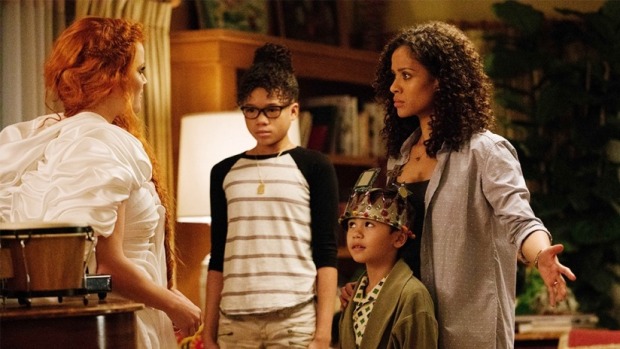 A Wrinkle In time
A Wrinkle In timeby Madeleine L'Engle
Series: Time Quintet #1
Publication Date: November 7, 1962
Genre: sci fi, YA
Pages: 218
It was a dark and stormy night; Meg Murry, her small brother Charles Wallace, and her mother had come down to the kitchen for a midnight snack when they were upset by the arrival of a most disturbing stranger.
“Wild nights are my glory,” the unearthly stranger told them. “I just got caught in a downdraft and blown off course. Let me be on my way. Speaking of way, by the way, there is such a thing as a tesseract”.
Meg’s father had been experimenting with this fifth dimension of time travel when he mysteriously disappeared. Now the time has come for Meg, her friend Calvin, and Charles Wallace to rescue him. But can they outwit the forces of evil they will encounter on their heart-stopping journey through space?
I decided to reread A Wrinkle in Time again because I am also going to reread the remainder of the Murry/O’Keefe series and I am one of those people who needs to begin at the beginning. I don’t have anything to add to this review, except that I remain in awe of Madeleine L’Engle’s extraordinary humanity. She was a remarkable woman, and I’m not sure that we deserved her.
I read the book as a child of the 1970’s – probably a bit more than decade or so after the initial 1963 publication, around 1977, when I was 11. I fell in love with the book then, seeing much of myself in Meg Murry, the ordinary, often grumpy, young woman. I revisited L’Engle in 2015, and found that, while some of her books had not held up with reread, many of them did.
This book is part of my personal canon, one of the books that shaped my childhood and had a part in making me who I am today.
A Wrinkle in Time is a bit of a period piece, to be sure. Girls today are stronger, more self-aware, more cognizant of the pressures of an often sexist society, and more willing to buck convention in order to be authentic to themselves. Not all girls, of course, but some girls. Our culture, today, at least struggles to understand these pressures and to acknowledge that they exist, even if we often fail to genuinely confront them.
A few notes on the the DuVernay adaptation from 2018: The adaptation succeeds in a way that, after reading a lot of L’Engle, and a fair amount about L’Engle, I believe that she would appreciate. Casting Storm Reid, a biracial young woman was, as Meg Murry, was an inspired decision, the relocation of the plot to a more diverse location in California, the addition of Charles Wallace as an adopted child, to me really work to illuminate some of the themes that L’Engle was writing about – alienation and dangers of extreme social conformity in particular.

There are parts of the book that are quite different from the movie, of course. In the book, the Murry’s have two additional children, a set of male twins who are effortlessly socially competent. They are capable of fulfilling society’s expectations with little work. Meg, on the other hand, is prickly, defensive, occasionally angry, and fearsomely intelligent – all things which 1963 America couldn’t really cope with in girls. Heck, we still struggle with girls who are prickly, defensive, occasionally angry and fearsomely intelligent.
L’Engle’s central message, as always, revolves around love. For L’Engle, love is the thing that sets humans apart – our capacity to love overcomes darkness, our willingness to sacrifice ourselves for love is what enables us to prevail over our adversaries. This is her spirituality, writ small – L’Engle was a deeply religious woman, and her faith informs her writing always (a fact which makes the presence of A Wrinkle in Time on banned book lists based upon religious objections to the text quite frankly odd).
I am not a religious woman, but the fact that someone like Madeleine L’Engle, brilliant and thoughtful, found a way to integrate her Christian faith with her love of science and her extraordinary tolerance gives me hope that American Christianity can step back from the dark place that it is in right now and find a way forward that is more affirming of the ideals held by women and men like her – that of equality and supporting the vulnerable among us. I can only imagine that L’Engle would have deplored much of what is going on in the evangelical Christian religion related to the persecution of LGBTQ people and the continued embrace of misogyny as a bedrock principle.
A Wrinkle in Time shines light into dark places. For that alone, it’s worth reading.